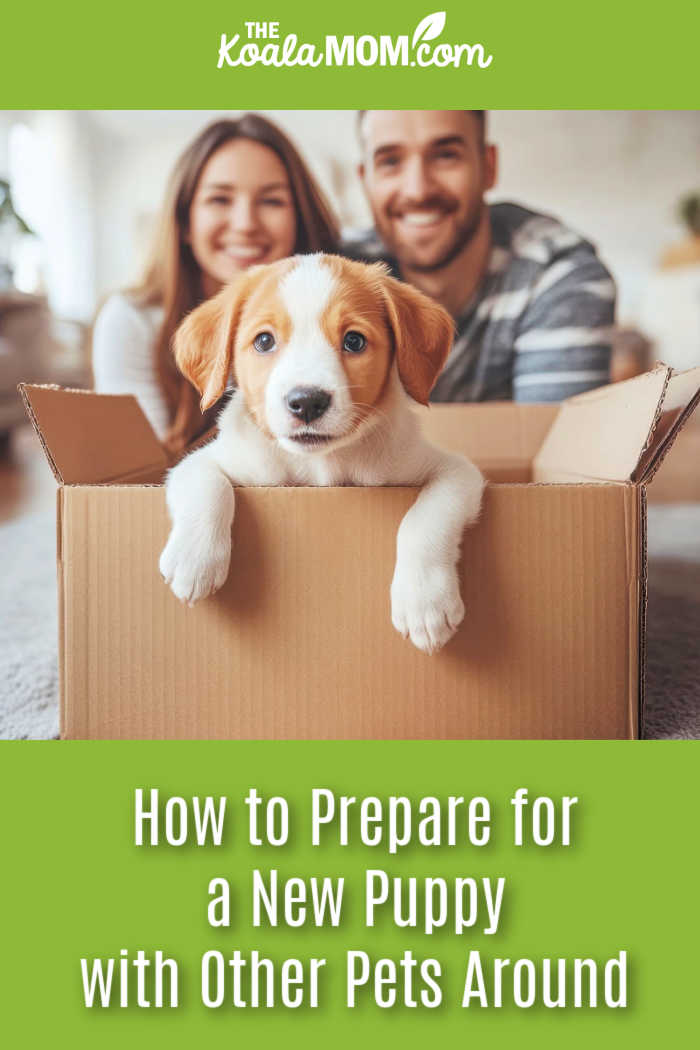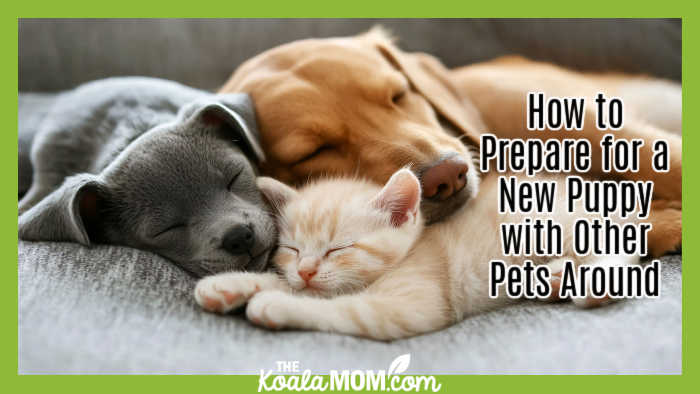Bringing a new puppy home is an exciting experience, but it requires careful planning—especially when other pets are in the household. Proper preparation ensures a smooth transition, minimizes stress for existing pets, and helps the puppy adjust to its new environment. Whether the home has cats, dogs, or smaller animals, introducing a new canine companion can demand patience, strategy, and consistency for puppy owners.
Read on to learn how to prepare for a new puppy with other pets.

Understand Existing Pets’ Temperaments
Before bringing a new puppy home, evaluating the personalities of current pets is crucial. Some animals are naturally more sociable, while others may be territorial or anxious around newcomers. Here’s how to understand the existing pets’ temperaments:
Dogs: Assess whether the resident dog is playful, dominant, or shy. Older dogs may prefer calm interactions, while younger ones might be more energetic.
Cats: Felines vary widely in temperament; some tolerate dogs, while others may hide or become aggressive.
Small pets (rabbits, birds, etc.): These animals may feel threatened by a puppy’s natural curiosity, so extra precautions are necessary.
Understanding these dynamics can help plan a gradual introduction process. It can also help to get a puppy that has already spent time socializing with other people and animals. If you’re looking for well-bred puppies, you may consider working with reputable providers. Visit Central Park Puppies or similar providers to find a healthy and socialized addition to your family.
Create a Safe and Separate Space
A new puppy should have its own designated area before meeting other pets. This space serves as a retreat where the puppy can feel secure while allowing existing pets to acclimate to its scent and presence. Below are some ways for creating a safe and separate space for your pets:
- Puppy-Proofing: remove hazards such as electrical cords, toxic plants, and small objects that could be chewed.
- Separate Feeding Areas: prevent food aggression by keeping bowls in different locations.
- Crates and Gates: use baby gates or crates to create boundaries, allowing pets to observe each other without direct contact.
This controlled environment can help reduce initial tension, prevent territorial disputes, and keep your puppy safe.
Introduce Scent Before Physical Meetings
Animals rely heavily on scent to assess new companions. Introducing the puppy’s smell before face-to-face meetings can ease the transition. Exchange blankets or rope toys between the puppy and other pets to familiarize them with each other’s scent. You can also gently rub a towel on the puppy and let other pets sniff it, associating the scent with something non-threatening.
These methods can help reduce anxiety and prevent aggressive reactions during the first physical introduction.
Supervise First Interactions
The initial meeting between the puppy and existing pets should be closely monitored. Keeping interactions short and positive can help prevent negative associations. Here are some tips for supervised first interactions:
- Neutral Territory: if possible, introduce pets in a neutral space, such as a park or a friend’s yard, to avoid territorial behavior.
- Leashed Introductions: keep the puppy on a leash while allowing other pets to approach at their own pace.
- Positive Reinforcement: reward calm behavior with healthy treats and praise to encourage a peaceful dynamic.
If any signs of aggression or extreme fear arise, separate the animals and try again later.
Establish a Routine for All Pets
Puppies thrive on consistency, and existing pets also benefit from a structured and consistent schedule. Maintaining feeding, play, and sleep routines minimizes stress and prevents jealousy. Below are some strategies to consider when establishing a routine for all pets:
- Feeding Times: feed pets simultaneously but in separate areas to avoid competition.
- Exercise and Play: ensure all pets receive individual attention to prevent feelings of neglect.
- Sleep Arrangements: provide separate sleeping spaces for each animal to rest undisturbed.
A predictable routine can help all pets adjust to the new family dynamic.
Conduct Training and Socialization
Proper training is essential for a puppy to coexist peacefully with other pets. Basic commands like “sit,” “stay,” and “leave it” can help manage interactions.
Enroll the puppy in training sessions to improve behavior around other animals and family members. Monitor interactions to correct rough play or bullying and provide training treats afterward. Consistent training can foster mutual respect between the puppy and existing pets.
Manage Potential Conflicts
Even with careful preparation, conflicts may arise. Recognizing and addressing issues early prevents long-term behavioral problems. Below are some ways for managing possible conflicts:
- Signs of Stress: watch for hiding, growling, or excessive barking, which indicates discomfort.
- Time-Outs: separate pets if tensions escalate and reintroduce them slowly.
- Professional help: Consult a veterinarian or animal behaviorist in veterinary clinics if aggression persists.
Proactive management can ensure a harmonious household.
Factor in Health Considerations for All Pets
Before introducing a new puppy, ensure all pets are up to date on vaccinations and parasite prevention as part of your preventative health care for your pets. The following are some health considerations to remember:
- Veterinary Check-Ups: schedule wellness exams for both the puppy and existing pets.
- Vaccinations: verify that all animals are protected against common diseases.
- Flea and Tick Control: prevent infestations by treating all pets regularly.
A healthy environment can promote positive interactions and avoid potential health risks.
Adopt Long-Term Integration Strategies
Successfully integrating a puppy into a multi-pet household is an ongoing process. Continued effort ensures lasting harmony and makes your puppy happy. Avoid favoritism by spending quality time with each pet. As puppy parents, allow relationships to develop naturally over weeks or months. With time, most pets adapt and may even form close friendships.

Introducing a new puppy to a home with other pets requires patience, preparation, and consistency. By keeping the information mentioned above in mind, you can foster a peaceful environment for your old and new pets.

No Responses Yet